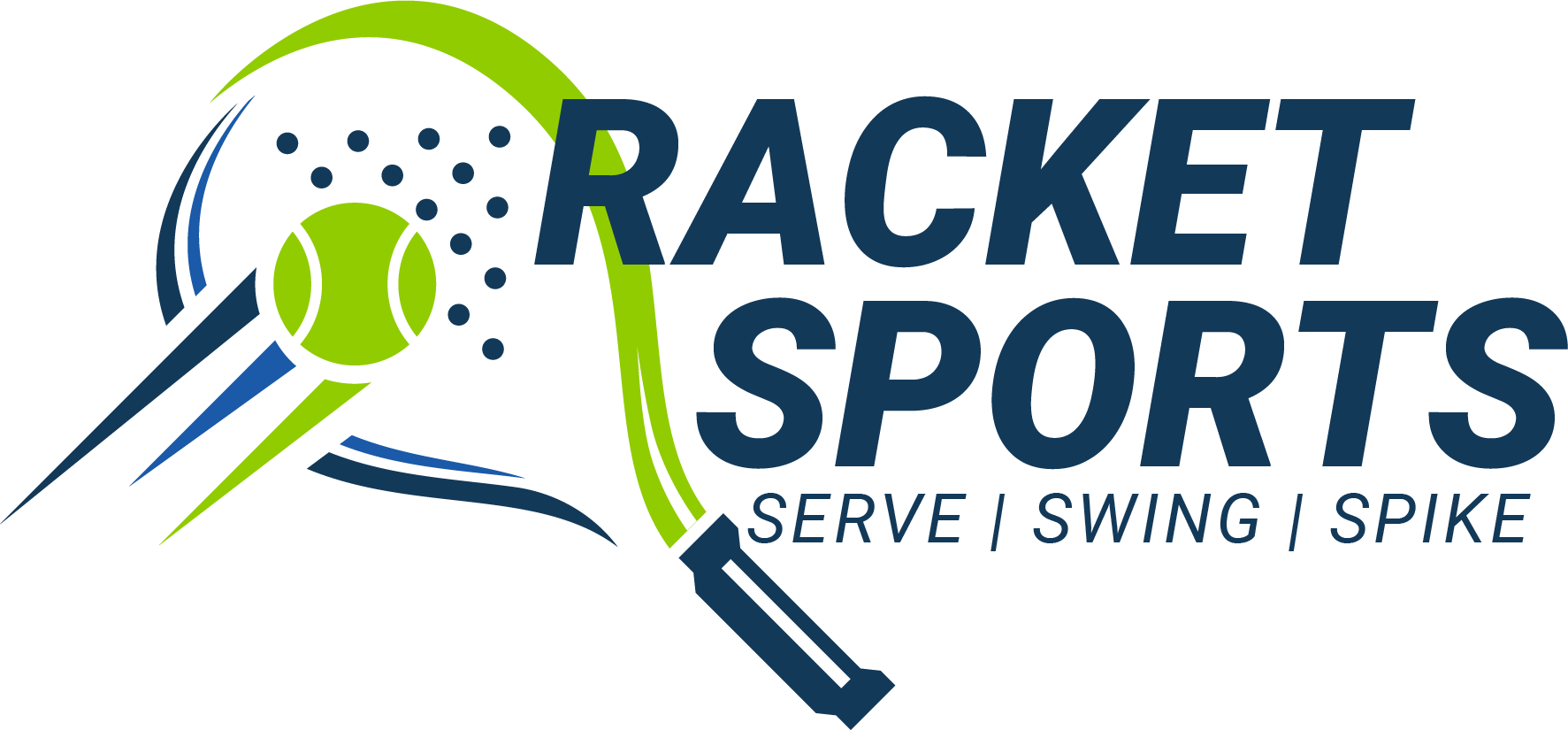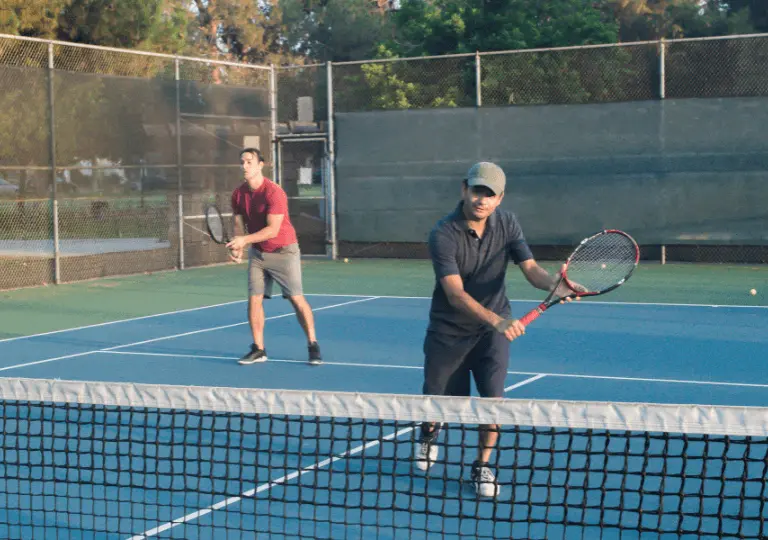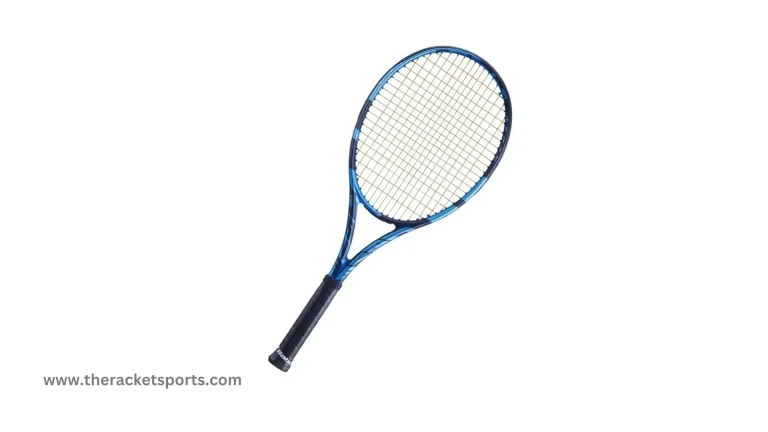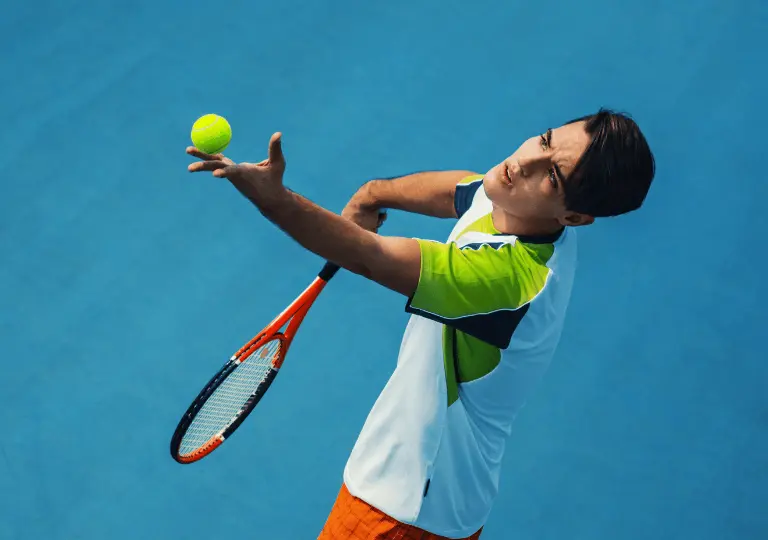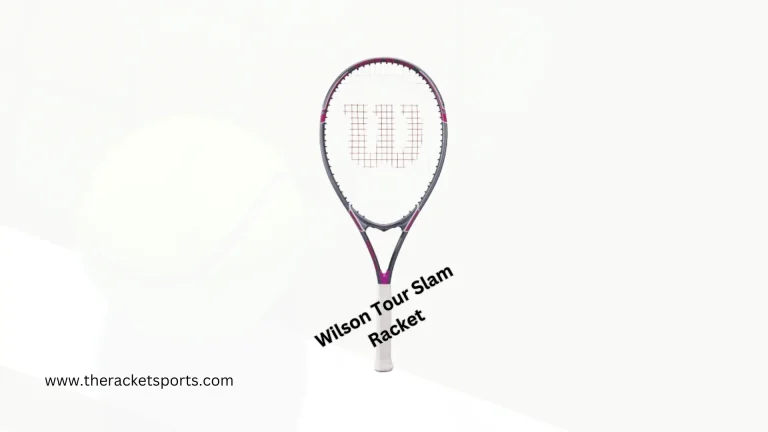Master the Lob in Tennis: Techniques & Strategy 2025
The “lob shot” in tennis is one of the most effective yet underutilized strategies in the game. Whether you’re facing an aggressive net player or simply looking for a way to reset the rally, a well-executed lob can turn the tide in your favor.
What is Lob in Tennis?
A lob in tennis is a shot that is hit high into the air, aiming to clear an opponent at the net and land deep in the court. It can be played with topspin or slice, depending on the situation and desired effect. It is a key tactical Tennis shot that can shift momentum during a match.
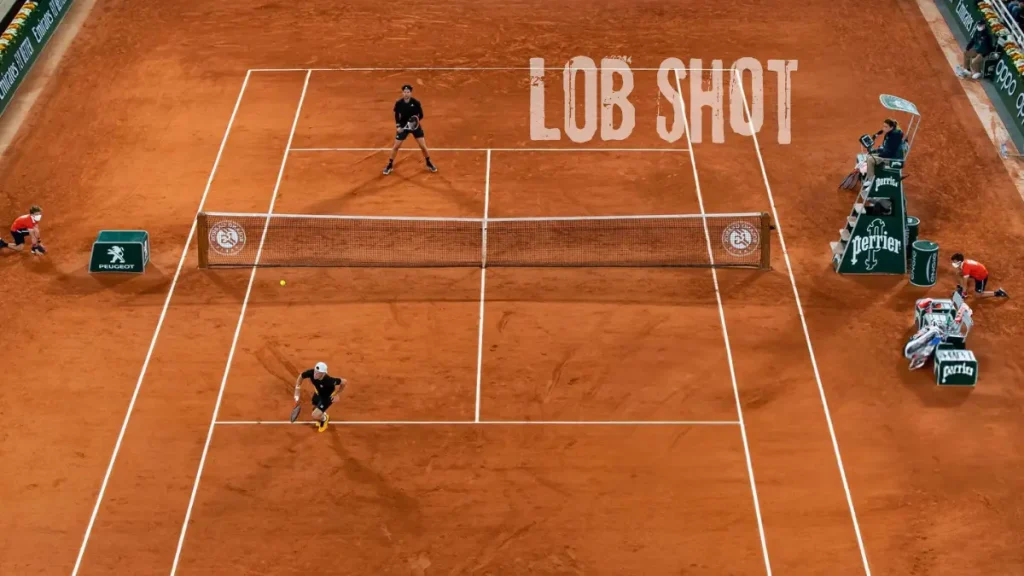
Purpose
The primary purpose of a “lob” in tennis is to put the opponent in a difficult position by forcing them to move back quickly. It can serve different roles depending on the situation:
- Defensive Purpose: When under pressure, a lob helps regain control of the rally.
- Offensive Purpose: A well-placed lob can surprise the opponent and win a point outright.
- Tactical Purpose: It disrupts an aggressive net player’s rhythm and forces them to adjust.
Learn More: Tennis banana Shot
Technique: How to Execute a Perfect Lob Shot
Mastering the lob shots requires precision, technique, and awareness of your opponent’s position. Here’s how you can perfect your lob shot:
1. Grip and Stance
- Use a continental or semi-western grip for better control and lift.
- Maintain a balanced stance with feet shoulder-width apart, preparing for an upward swing.
- Keep your knees slightly bent to generate power and control.
Read Our Best Review : Top 10 Best Head Tennis Racquets for Every Player
2. Swing and Contact Point
- Aim for an upward and controlled swing to lift the ball over your opponent.
- Contact the ball in front of your body, ensuring a smooth follow-through.
- Focus on a gentle, controlled wrist action to dictate height and depth.
3. Adding Spin
- Topspin Lob:
- Brush up on the ball aggressively to generate topspin.
- This type of lob shot dips quickly after clearing your opponent, making it harder to return.
- Ideal for offensive tennis lob shots that bounce high and push opponents further back.
- Slice (Backspin) Lob:
- Open the racket face slightly and slice under the ball.
- Creates a slower, floating effect, making it harder for the opponent to time their return.
- Useful in defensive situations when needing time to recover.
4. Target Placement
- Aim deep into the opponent’s court, ideally landing near the baseline.
- If your opponent is fast and athletic, add extra height to make the lob shot harder to reach.
- When facing an aggressive net player, ensure your lob is high and deep to prevent an overhead smash.
5. Footwork and Positioning
- If playing a defensive lob, step back slightly to create more space for an effective lift.
- For an offensive lob, step into the shot to generate more power and control.
- Follow through with your racket high to maintain balance and shot accuracy.
Lob Types:
There are two main types of lob shots in tennis:
- Defensive Lob – Used to buy time when under pressure. It has a higher trajectory and more topspin to push the opponent back.
- Offensive Lob – Designed to catch an opponent off guard, typically flatter and placed deep to make it difficult to reach.
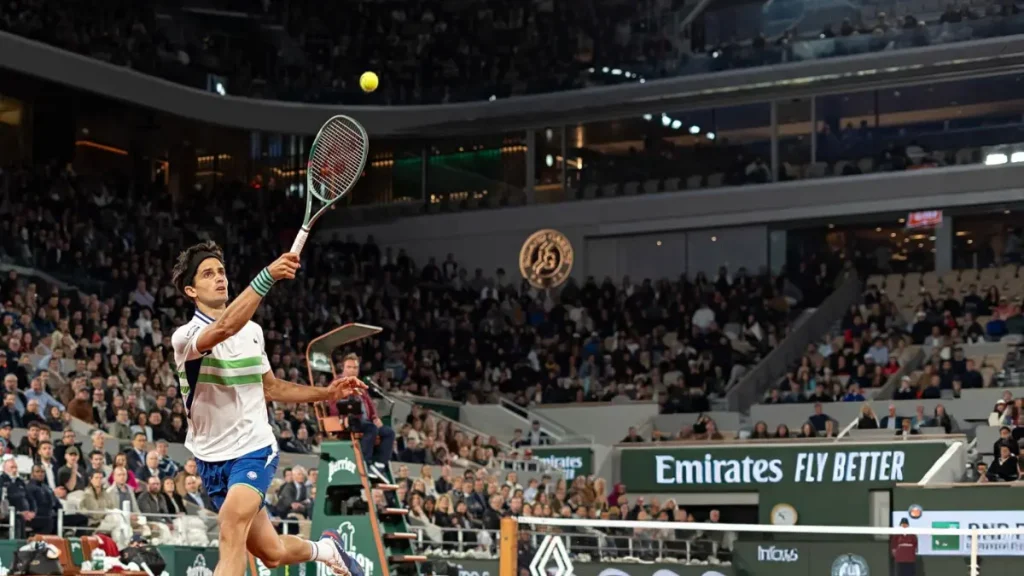
When to Use a Lob Shot in Tennis
A well-timed tennis lob shot can be a game-changer. Here are some key situations where it’s most effective:
- Against a Net Rusher: If your opponent frequently comes to the net, a lob shot can force them back or result in an easy point.
- During a Defensive Rally: When under pressure, a defensive lob can reset the point and allow you to regain control.
- Exploiting Poor Footwork: If your opponent struggles with movement, a surprise lob can catch them off guard.
- To Set Up an Attack: A well-placed lob can push your opponent deep, allowing you to take control of the net.
- In Doubles Play: Tennis lob shots are particularly effective in doubles, where both opponents may be positioned at the net.
Common Mistakes and How to Avoid Them
- Hitting Too Short: This allows opponents to smash the ball. Focus on depth.
- Too Much Power: Overhitting results in errors. Instead, prioritize control.
- Predictable Lob Patterns: Mix it up with passing shots to keep your opponent guessing.
FAQs
What is the difference between a topspin lob and a defensive lob?
A topspin lob is an attacking shot that dips quickly, while a defensive lob is a high-arcing shot designed to reset the rally.
When should I use a lob instead of a passing shot?
Use a lob shot when your opponent is too close to the net, and a passing shot when they leave an open court space.
How do I improve my lob accuracy?
Practice targeting deep corners and work on consistency with spin control.
Can lobs be effective on all court surfaces?
Yes, but lob shots are more effective on slower surfaces like clay, where players have more time to retrieve them.
What is the best way to counter an opponent’s lob?
Anticipate the lob shot early and position yourself for an overhead smash or a deep groundstroke return.
Conclusion
The lob in tennis is a powerful tactical weapon when executed correctly. Whether you’re on the defensive or looking for an attacking opportunity, mastering the lob shot can add a new dimension to your game. Next time you’re on the court, practice different lob shots in tennis and incorporate them into your strategy!
Looking for more tennis tips? Stay tuned for our expert guides and strategies!
